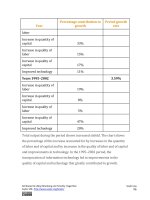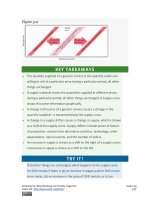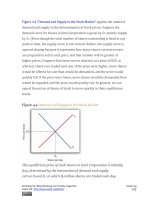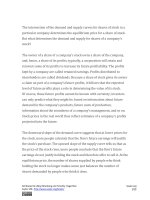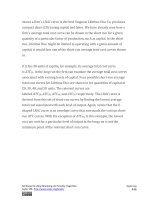Authors libby rittenberg 819
Bạn đang xem bản rút gọn của tài liệu. Xem và tải ngay bản đầy đủ của tài liệu tại đây (533.63 KB, 1 trang )
Source: CBO, Effective Federal Tax Rates under Current Law, 2001 to 2014,
August, 2004, Table 2 and Table A-1 (adjusted by authors using CBO
assumptions concerning rates of growth of income and households).
Numbers of households do not add up to total because of excluded
categories. Quintiles contains equal numbers of people.
KEY TAKEAWAYS
The primary principles of taxation are the ability-to-pay and benefitsreceived principles.
The percentage of income taken by a regressive tax rises as income
falls. A proportional tax takes a constant percentage of income
regardless of income level. A progressive tax takes a higher
percentage of income as taxes as incomes rise.
The marginal tax rate is the tax rate that applies to an additional dollar
of income earned.
Tax incidence analysis seeks to determine who ultimately bears the
burden of a tax.
The major types of taxes are income taxes, sales taxes, property taxes,
and excise taxes.
Buyers bear most of the burden of an excise tax when supply is
relatively elastic and when demand is relatively inelastic; sellers bear
most of the burden when supply is relatively inelastic and when
demand is relatively elastic.
The federal tax system in the United States is progressive.
TRY IT!
Consider three goods, A, B, and C. The prices of all three goods are
determined by demand and supply (that is, the three industries are
perfectly competitive) and equal $100. The supply curve for good A
Attributed to Libby Rittenberg and Timothy Tregarthen
Saylor URL: />
Saylor.org
819
